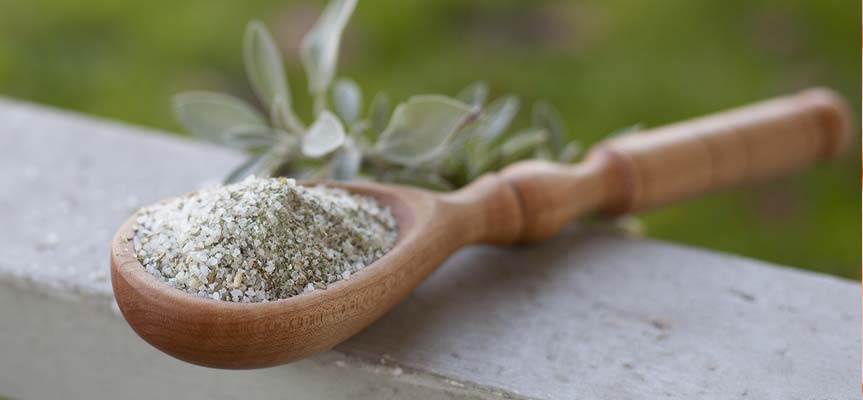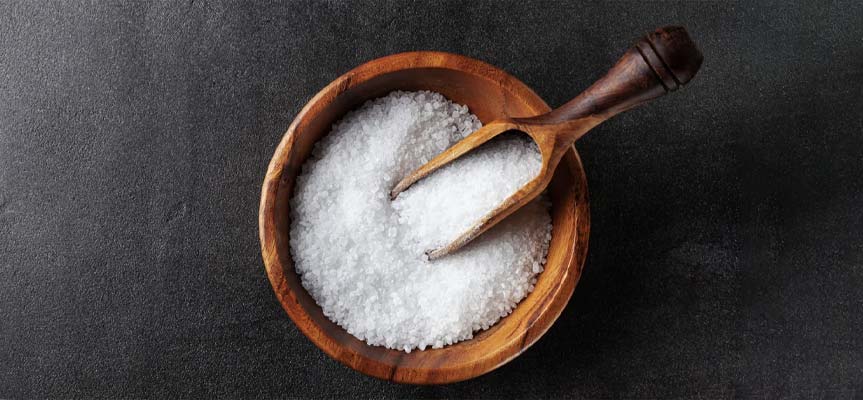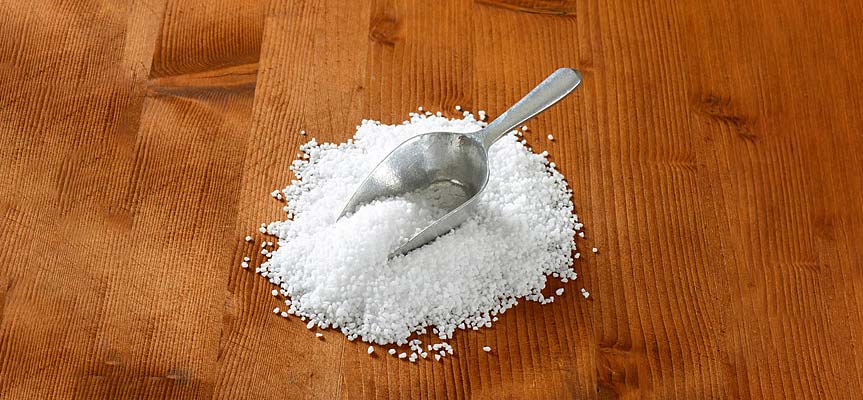Salt has long been one of the most important seasonings in cooking; however, excessive consumption—especially of refined industrial salt—can pose serious health risks. Numerous studies have shown a direct link between high sodium intake and increased blood pressure, heart disease, and kidney problems. In recent years, attention to healthy salt substitutes has become a key concern for nutritionists, doctors, and even food industry business owners.
In this article, with a scientific and practical approach, we will explore various salt substitutes, from herbal salt and potassium salt to the use of natural spices. Alongside introducing these substitutes, we will explain their benefits, limitations, and usage methods to help you maintain a low-salt yet flavorful and healthy diet.
Why Should We Reduce Salt Intake?
Excessive sodium consumption is one of the main causes of high blood pressure. According to the World Health Organization, an adult should consume no more than 5 grams of salt (about one teaspoon) per day. Unfortunately, actual consumption in many countries, including Iran, is two to three times this amount.
Increased sodium in the body forces the kidneys to work harder to excrete it, which over time can lead to kidney failure. Furthermore, excessive salt disrupts the body’s water and electrolyte balance and endangers heart health.
Herbal Salt: A Healthy and Flavorful Option
Herbal salt is a mixture of dried aromatic herbs such as rosemary, thyme, parsley, and marjoram, combined with a small amount of natural salt. This type of salt not only reduces sodium intake but also adds a unique aroma and flavor to food.
Benefits of Herbal Salt:
- Reduces sodium intake without sacrificing flavor
- Rich in antioxidant compounds
- Improves digestion and stimulates appetite
In recent years, the Grownida Innovation and Creativity Center has implemented projects to develop low-sodium herbal seasonings, which can serve as inspiration for food producers.

Potassium Salt: A Scientific Substitute for Blood Pressure Control
Potassium salt is one of the best alternatives to regular salt, replacing sodium with potassium. Potassium helps lower blood pressure and supports heart health. However, people with kidney disease should use it with caution.
It’s important to note that potassium salt has a slightly different, more bitter taste compared to regular salt, but combining it with spices can balance the flavor.
Sea Salt: Natural but Not Always Low-Sodium
Sea salt is popular for its minerals such as magnesium and calcium. However, its sodium content is not significantly lower than refined salt. Therefore, if your goal is to reduce sodium, simply switching to sea salt is not enough—you must also limit its consumption.
Spices: The Best Natural Flavoring Alternative to Salt
Spices are among the oldest ways to season food in various cultures around the world, offering exceptional aroma and taste without adding sodium. Turmeric, black pepper, cinnamon, ginger, cardamom, cumin, thyme, rosemary, and saffron not only enhance flavor but also have unique medicinal properties.
Examples:
- Turmeric: Anti-inflammatory and powerful antioxidant
- Thyme: Antibacterial and beneficial for the digestive system
- Rosemary: Improves blood circulation and boosts memory
Clever spice combinations can keep food tasty and balanced even without salt. For example, combining dried lime, turmeric, and black pepper in Iranian stews, or using garlic powder and rosemary in grilled dishes, creates delicious and healthy flavors.
The Difference Between Low-Sodium Salt and Dietary Salt
Many people assume low-sodium salt and dietary salt are the same, but there are important differences:
- Low-Sodium Salt: Contains less sodium than regular salt, but still has some sodium—usually partially replaced with potassium.
- Dietary Salt: Completely sodium-free or contains a negligible amount, often made with other minerals such as potassium chloride.
Important: People with kidney problems or those taking certain medications should consult a doctor before using dietary salt, as excessive potassium can be dangerous.

Strategies to Reduce Sodium Intake in Your Diet
Sodium is an essential mineral for the body’s function, but excessive intake increases the risk of high blood pressure, heart disease, kidney problems, and even stroke. Many people unknowingly consume several times the recommended daily limit (no more than 2,300 mg for adults, according to WHO).
Tips for reducing sodium intake:
- Gradually reduce salt in cooking – Sudden reduction may make food seem bland, so decrease it slowly to help your taste buds adjust.
- Replace salt with spices and aromatic herbs – Use black pepper, turmeric, cumin, garlic powder, onion powder, thyme, rosemary, and fresh herbs such as parsley, coriander, and basil for flavor.
- Choose low-sodium or no-salt products – Check food labels for “Low Sodium” or “No Added Salt.”
- Avoid processed foods – Over 70% of daily sodium comes from processed items like sausages, deli meats, canned goods, chips, ready meals, and fast food.
- Use lemon juice and vinegar instead of salt – The natural acidity from fresh lemon juice or apple cider vinegar can enhance flavor without adding sodium.
- Rinse canned foods – If using canned beans, chickpeas, or corn, rinse them in cold water to wash away much of the sodium.
- Watch out for hidden sodium – Bread, processed cheese, sauces, and instant seasoning mixes may contain high sodium despite not tasting salty.
- Cook at home instead of eating out – This gives you full control over salt content and gradually adapts your taste to low-salt foods.
Cooking Low-Salt Meals with Great Flavor
To prepare delicious low-salt dishes:
- Use fresh onions, garlic, and ginger as a flavor base.
- Combine lemon juice or apple cider vinegar with spices to boost flavor.
- Add fresh herbs like parsley, coriander, basil, and mint for freshness and aroma.
- Slow-cook and use natural ingredients like fresh tomatoes and bell peppers to enhance natural flavors.
The Effect of Reducing Salt on Heart Health
Research shows that even a small reduction in salt intake can lower blood pressure and reduce the risk of heart disease by up to 20%.
The Role of a Healthy Diet in Blood Pressure Control
High sodium intake is a major cause of high blood pressure. In contrast, diets rich in fruits, vegetables, whole grains, low-fat dairy, and healthy protein sources help maintain healthy blood pressure levels. The DASH (Dietary Approaches to Stop Hypertension) diet is one of the most well-known approaches for controlling blood pressure, emphasizing fresh foods and reduced salt.
Health Benefits of Herbal Salt
Herbal salt is usually made by combining mineral salt with powdered aromatic and medicinal herbs. Its benefits include:
- Lower sodium consumption due to reduced need for pure salt
- Strengthened immune system from the beneficial herbs
- Improved digestion and better gastrointestinal function
These salts not only promote health but also provide a new and enjoyable flavoring experience.
Low-Sodium Salts Available in the Iranian Market
Several brands of low-sodium salt are available in Iran that can be good substitutes for daily use. Always check the ingredient label and sodium content before purchasing.
Herbal Salt Substitutes in Iranian Cooking
In Iranian cuisine, the following traditional combinations can be used instead of salt:
- Dried and powdered dried lime for stews
- Aromatic dried herbs such as savory, tarragon, and mint
- Dried garlic and onion for flavoring rice and cooked dishes
- Cumin and fennel for meat and legume dishes
These substitutes not only avoid raising blood pressure but also have medicinal properties.

Practical Tips for Adapting to Low-Salt Foods
Gradually reducing salt in meals, using acidic seasonings and aromatic spices, and preparing homemade meals instead of fast food can help adjust your taste preferences.
The Harm of Excess Salt and Hidden Sodium in Foods
Too much sodium can lead to high blood pressure, cardiovascular problems, osteoporosis, fluid retention, and kidney issues. Much of daily sodium intake comes from hidden sodium in industrial foods such as bread, sauces, snacks, and ready meals. Awareness of these sources and reading food labels can greatly help in sodium control.
Conclusion
Reducing sodium intake is not only important for people with high blood pressure but also a preventive step for everyone to maintain heart, kidney, and circulatory system health. Adjusting to lower salt intake takes time and patience, but eventually, your taste will adapt to the natural and healthy flavors of foods.
By making informed food choices, using natural substitutes like spices and aromatic herbs, and avoiding processed foods, you can significantly cut sodium consumption. Remember—prevention is always simpler and less costly than treatment.
Incorporating this approach into your lifestyle not only reduces your risk of heart disease and hypertension but also improves your overall quality of life and daily vitality.
If you are a food business owner or researcher, collaborating with innovation centers such as Grownida can create new opportunities for developing healthy, low-sodium products.
Frequently Asked Questions
What is a salt substitute?
Any substance that can maintain or enhance the flavor of food without significantly increasing sodium, such as herbal salt, potassium salt, and spices.
Is herbal salt healthier?
Yes, because it contains less sodium and includes beneficial plant compounds.
What is the best way to reduce salt intake?
Use aromatic spices, reduce processed foods, and add salt at the end of cooking.
What is potassium salt and what are its benefits?
Salt in which sodium is replaced with potassium, helping to lower blood pressure.
Which spices can replace salt?
Turmeric, black pepper, cumin, cinnamon, ginger, and sumac are among the best options.

